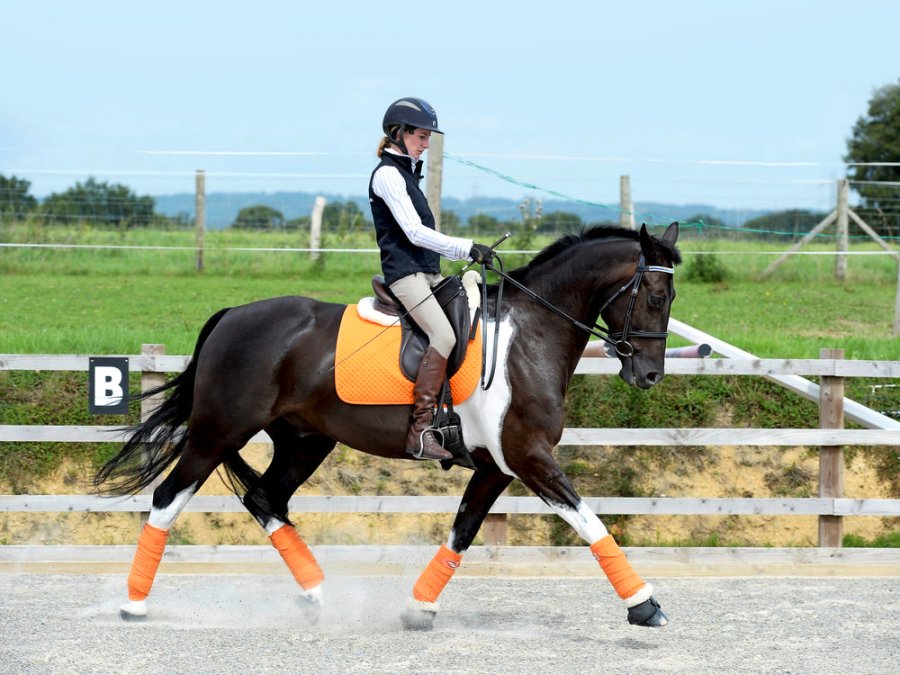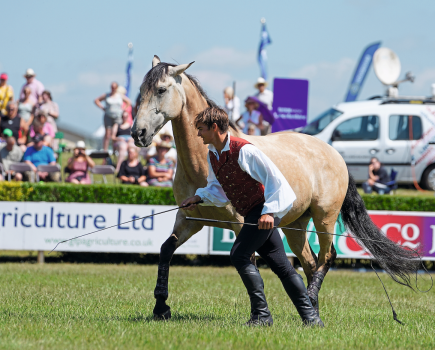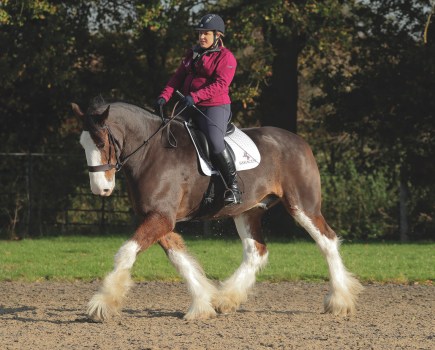Asking your horse to work without a proper warm up is a bit like asking you to go straight into a gym class after a whole day sitting at your desk.
A well-structured warm up helps to minimise the risk of injury to your horse and ensures he can move freely and easily. It also prepares both you and your horse mentally and physically for your training for that session.
Former Spanish Riding School rider Florian Bacher suggests four key areas to incorporate into your warm up and set you up for a successful schooling session.
1. Time for a stretch
In an ideal world your warm up will start with your horse stretching. However, this isn’t always possible and, depending on your horse’s temperament and level of training, it may be safer to ride your horse on a contact at the start of your session.
This is especially the case if your horse doesn’t fully understand what a stretch is, or he’s feeling fresh or spooky.
2. Check he’s listening
You can never ride too many transitions. These will check that your horse is listening to you and obedient to your aids.
Try to keep your horse’s ear tips level during transitions – this will help you gauge whether your transitions are correct and coming from behind, or if he’s lifting himself, rather than pushing from his hindlegs.
3. Encourage engagement
There are various benefits of incorporating lateral work into your warm up. It’s a great way to improve your horse’s engagement and makes you focus on what his hindlegs are doing.
It also encourages you to put your leg on, which is important if your horse is tense or forward-going. Any of the lateral work movements are good as they all help to activate the inside hindleg.
Begin by riding some leg-yield in rising trot – and, if possible, in a slightly stretched frame. You can do this from the three-quarter line back to the track and then start to ride some transitions within the pace while you’re leg-yielding.
4. Boost his circulation
Working in canter is a good way to boost your horse’s circulation and get his muscles functioning. Begin by asking your horse to stretch on a large circle.
To ask for a longer frame, ride with your hands lower and wider than normal to encourage your horse to seek the contact forward and down.
The aim is for your horse to follow your hand and not be supported by your hand. As you do this remember to also focus on riding a regular rhythm.
After a short walk break, you and your horse are ready to move onto the main part of your schooling work.
Don’t miss the latest issue of Your Horse Magazine, jam-packed with training and veterinary advice, horse-care tips and the latest equestrian products available on shop shelves, on sale now.










